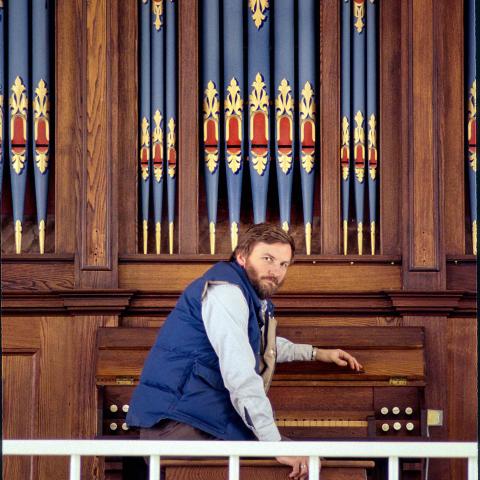
Elizabeth Ayers Compton Bellocchio, 65, of Haverhill, Massachusetts, died August 30. She was an organist, organbuilder, historian, and museum and arts administrator, known professionally as Lisa Compton. Born October 9, 1953, in Greenfield, Massachusetts, she grew up in Exeter, New Hampshire. She began piano lessons at Ellerslie School, Great Malvern, England, where the family lived for a year while her father was an exchange professor at Malvern College.
Lisa Compton was executive director of the Seneca Falls Historical Society, Seneca Falls, New York, from 2000 until 2002, and was from 1998 to 2000 executive director of the Friends of Vista House, Corbett, Oregon. She was the first professional director of the Old Colony History Museum in Taunton, Massachusetts, 1982–1996, and served on the Taunton Historic District Commission, revising and editing the second edition (1986) of Taunton Architecture: A Reflection of the City’s History.
She researched and wrote many entries as editor of the Organ Historical Society’s 2005 Southeastern Massachusetts convention handbook and served on the convention planning committee, co-chaired by her husband, Matthew Bellocchio. She was consultant for the restorations of historic organs at the Congregational Church (c. 1834 E. & G. G. Hook), Berkeley, Massachusetts, and Pilgrim Congregational Church (1890 Johnson & Son), Taunton, Massachusetts.
In 1975, as a fellow in the Summer Museum Studies program at Historic Deerfield, Massachusetts, she researched the history of dancing and ballrooms in early New England and presented programs and lectures based on her research. She later served for two years as assistant curator at the Memorial Hall Museum in Deerfield, creating the summer Old Deerfield Sunday Afternoon Concert Series that continues to date.
She trained and supervised tour guides at Castle Hill, the mansion on the Crane Estate, Ipswich, Massachusetts, as an employee in the Education Department of The Trustees of Reservations, 2007–2010. She was administrator at the Universalist Unitarian Church of Haverhill, 2011–2017, and was a librarian at the Graves Music Library of Phillips Academy, Andover, Massachusetts, from 2010 until her recent illness prohibited continuing.
As an organbuilder, Lisa Compton was a member of the American Institute of Organbuilders, having been among the first women to take and pass the AIO examination in 1979 to receive the Colleague Certificate. Employed by the Berkshire Organ Company, she became the New York City service representative. She later worked occasionally with other firms and with her husband at the Roche Organ Co., Taunton, Massachusetts; Bond Organ Builders, Inc., Portland, Oregon; Parsons Pipe Organ Builders, Canandaigua, New York; and Andover Organ Company, Inc., Methuen, Massachusetts.
A 1975 graduate of Smith College, Northampton, Massachusetts, with a degree in art history and music, she studied organ with Vernon Gotwals at Smith and earlier with Richard Bennet, organist at her high school, Concord Academy. In 1970, she helped to relocate the 1872 E. & G. G. Hook & Hastings Opus 676 to the academy chapel (and since relocated to the Smithsonian Institution). She served as music director and organist at First Baptist Church, Northampton, Massachusetts; in Taunton, Massachusetts, at St. Thomas Episcopal Church, St. John’s Episcopal Church, and Pilgrim Congregational Church; First Presbyterian Church, Seneca Falls, New York; and as accompanist for the children’s choir at Trinity Episcopal Cathedral, Portland, Oregon, where she was also a substitute organist at other churches.
Elizabeth Ayers Compton Bellocchio is survived by her organbuilder husband Matthew Bellocchio and their daughter Holly Bellocchio Durso of Abington, Massachusetts. She is also survived by her brother Karl Compton of Rockport, Texas, and her sister Carol Compton of Keene, New Hampshire. A funeral was conducted September 28 at St. Thomas Episcopal Church, Taunton, where she had been a member since 1983. She sang in the choir, served on many committees and two terms on the vestry, and sewed the church banner that hangs by the organ case (1899 George Jardine & Son, Op. 1257/1980 Roche Organ Co.). Donations in her memory may be made to the Memorial Fund of St. Thomas Episcopal Church or to the Old Colony History Museum, 66 Church Green, Taunton, MA 02780.



